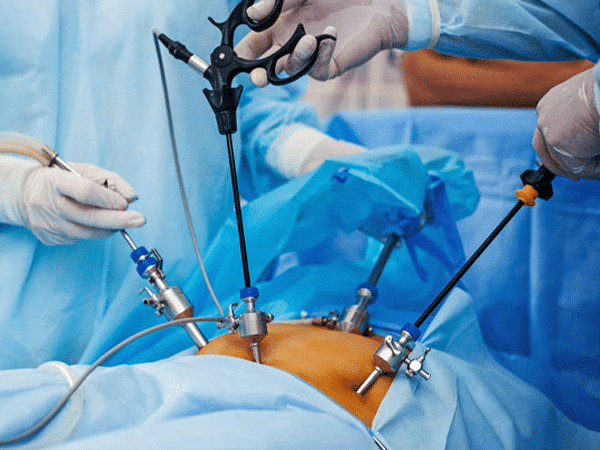Laparoscopy for all Urological Conditions
Laparoscopy, also known as keyhole surgery, refers to a minimally invasive surgical procedure; that is performed using a laparoscope, a small fibreoptic instrument with a connected camera and lens.
This small telescope is equipped with a built-in magnification mechanism. During the surgery, different types of surgical instruments are inserted through small incisions made in the skin. Laparoscopy offers several diagnostic and therapeutic benefits, just like traditional open surgery. It also has significantly reduced postoperative pain, ensures a shorter hospitalisation, speedier recovery, and produces far better cosmetic results.
Today, rapid advancements in the field of medicine and technology have enabled doctors and physicians to perform laparoscopic surgeries for the treatment of different types of urological conditions

Some of the most commonly performed laparoscopic surgeries for urological conditions include:
Laparoscopic Simple or Radical Nephrectomy:
A simple Nephrectomy refers to the removal of the affected kidney. A radical nephrectomy, on the other hand, is a procedure that involves the removal of the kidney along with lymph nodes and sometimes, the adrenal gland. Laparoscopic nephrectomy is recommended for patients with kidney cancer, symptomatic hydronephrosis, chronic infection, polycystic kidney disease, shrunken blocked kidneys, hypertension, or renal calculus.
Laparoscopic Donor Nephrectomy :
A laparoscopic donor nephrectomy is a procedure that involves the removal of a kidney for the purpose of donating it to another patient. Some dangerous donor complications that might occur during this procedure include injury to the renal vessel or bowel, hematoma, and incisional hernias, which are essentially the same as those of a conventional, open surgery.
Laparoscopic Nephroureterectomy : It is a surgical procedure in which the kidney and the ureter are removed. It is mainly used to treat patients suffering from transitional cell carcinoma of the ureter or kidney. Risks include infection, loss of blood, and injury to the surrounding tissue and organs such as the bowel, lung, vascular structures, spleen, liver, pancreas, and gallbladder.
Laparoscopic Partial Nephrectomy : This is a surgical procedure, used to remove the damaged part of a kidney containing a tumour.
Laparoscopic partial nephrectomy is usually performed in patients suffering from a solid renal mass in a solitary kidney or compromised contralateral kidney, bilateral renal tumours, or those who have a normal contralateral kidney with localized small renal tumours.
Various risks and complications of this procedure include infection, loss of blood, hernias at incision sites, urine leakage, and sometimes injury to the surrounding the tissue and organs like any other surgery. However, delayed bleeding is a rare but serious complication that requires urgent medical attention and intervention.
Laparoscopic Pyeloplasty : Laparoscopic Pyeloplasty is a surgical procedure that helps relieve the obstruction between the ureter and the kidney located in the ureteropelvic junction. Associated risks include infection, loss of blood, failure of surgery, and injury to the surrounding tissue and organs.
Laparoscopic Radical Prostatectomy : This is a surgical procedure in which the prostate gland and some surrounding tissue are removed. This procedure is highly effective in the treatment of localised prostate cancer or that, which has not spread beyond the prostate gland.
Potential risks include infection, bleeding, urinary incontinence, erection problems, uretherovesical anastomotic leakage, hernias at incision sites, and injury to the surrounding tissue and organs.
Laparoscopic Radical Cystectomy : It is a surgical procedure that involves the removal of the urinary bladder, and is usually recommended for patients with muscle-invasive bladder cancer. Possible risks include blood vessel injury, bowel leak, urine leak, chest complications, prolonged hospitalization, and re-exploration, among others.

